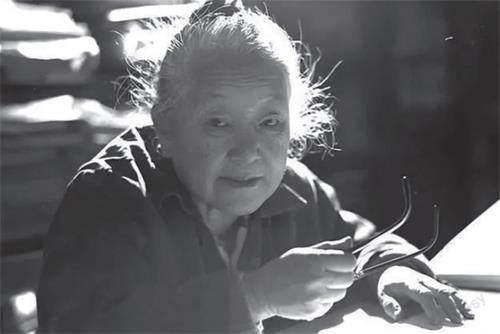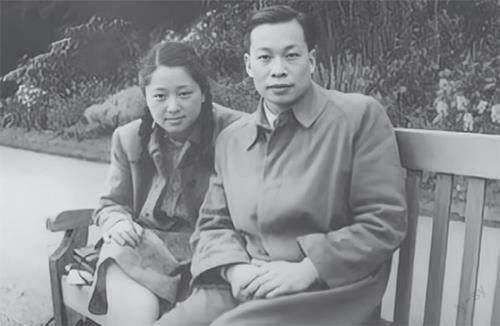He Zehui - China’s Marie Curie 何泽慧-“中国的居里夫人”
2023-11-23朱广春
朱广春



她,是中國第一位物理学女博士,是中国科学院第一位女院士,是中国原子能科学的创始人。她被国际科学界誉为“中国的居里夫人”,但她却低调了一生。她,就是何泽慧。
In March 1914,He Zehui was borni n a 1 )prominentfamily in Suzhou, Jiangsu. In 1932, she became the student tobe admitted to the Department of Physics at Tsinghua Universitywith the highest score.
In 1936, He Zehui went to Germany to study experimentalballistics for a doctorate at Technical University of Berlin. At thattime, the subject did not admit female students, so He Zehuiwrote a 2)sincere letter to the school, “My country is sufferingfrom Japanese aggression, and I am studying this specialty tofight against the Japanese aggressors.” Her sincerity moved theschool, and she became the first foreign female student to studyballistics there.
In 1940, He Zehui received her doctorate in engineering. InApril 1946, she married QianSanqiang, who was studyingat the Curies 3)laboratoryof University of Paris inFrance. Qian Sanqiang was her classmate atTsinghua Universityand later becameknown as “father ofChinas atomic bomb”.
At the Curies laboratory, on December 20, 1946, HeZehui discovered a new way of uranium fission, which causeda sensation in the scientific community and was regarded asthe most significant discovery in physics after World War II. Asa result, she became the object of competition among variouscountries. Despite that, she said, “Science has no borders, butscientists have their own country.” In the summer of 1948, sheresolutely chose to return to her homeland with her husband.
After returning to China, going through 3 years and morethan 420 failed attempts, she led and successfully developedChinas own nuclear emulsion.
In the 1950s, He Zehui also presided over the constructionof Chinas first nuclear reactor and cyclotron, and served asthe director of the Neutron Physics Research Laboratory.
In the 1970s, He Zehui worked as the vice director of Institute of High EnergyPhysics, Chinese AcademySciences. She advocatedfor interdisciplinary research and actively promoted researchin 4)cosmic ray ultra-high-energy physics and high-energyastrophysics. Under her leadership, Institute of High EnergyPhysics built the worlds highest alpine nuclear emulsion roomin Tibet, making China one of the few countries that couldproduce nuclear emulsion during those years.
In her later years, she continued to work tirelessly forChinas scientific cause. At the age of 90, she insisted ongoing to work and taking long-distance sleeper trains to attendacademic conferences.
On June 20, 2011, He Zehui, who had dedicated halfa century to Chinas nuclear industry and made greatcontributions to the development of the countrys atomic andhydrogen bombs, passed away at the age of 97.
In 2017, to commemorate this high-energy astrophysicist,China named its first space X-ray astronomical satellite — HardX-ray Modulation Telescope “Insight” (Huiyan in Chinese).
1) prominent adj. 重要的;著名的
2) sincere adj. 衷心的;誠挚的
3) laboratory n. 实验室;实验大楼
4) cosmic adj. 宇宙的
1914 年3 月,何泽慧出生于江苏苏州的一个名门望族。
1932 年,她以最高分考入清华大学物理系。
1936 年,何泽慧前往德国柏林工业大学攻读实验弹道学专业。由于当时这个学科不招收女学生,何泽慧就特别诚恳地向学校写了一封信:“我的祖国正在遭受日本侵略,我学习这个专业是为了抗击日本侵略者。”她的真诚打动了学校,她也成为该校第一位学习弹道学的外国女学生。
1940 年,何泽慧获得工程博士学位。1946 年4 月,她与在法国巴黎大学居里实验室学习的钱三强结婚。钱三强曾是她在清华大学的同班同学,后来成为“中国原子弹之父”。
1946 年12 月20 日,在居里实验室里,何泽慧发现铀核裂变的新方式,轰动了科学界,被称为二战之后物理学上最有意义的一次发现。于是,她成为各国争抢的对象。但她说:“科学没有国界,科学家却有祖国。”1948 年夏,她毅然选择与丈夫一起回到了祖国。
回国后,三年时间里经历420 多次试验的失败后,她领导并成功研制出中国自己的原子核乳胶。
20 世纪50 年代,何泽慧还主持建成了我国第一台核反应堆与回旋加速器,并担任中子物理研究室主任。
20 世纪70 年代,何泽慧担任中国科学院高能物理研究所副所长,她主张开展交叉学科的研究,积极推动宇宙线超高能物理及高能天体物理研究。在她的主持下,高能物理研究所在西藏建成世界上最高的高山乳胶室,使中国成为当时少数几个能生产核乳胶的国家之一。
晚年时期,她还在为我国科学事业奔走。90 岁高龄的她坚持去上班,坐长途卧铺参加学术会议。
2011 年6 月20 日,为中国核事业奋斗半个世纪、为“两弹”立下汗马功劳的何泽慧逝世,享年97 岁。
2017 年,为了纪念这位高能天体物理学家,中国发射的首颗空间X 射线天文卫星——硬X 射线调制望远镜被命名为“慧眼”。
